Melanie Reay is a former player of both Sunderland and Newcastle United, in addition to being the current head coach of Sunderland Women, where she is doing a fine job. Reay started her coaching career at Newcastle United as an assistant before becoming an assistant for Sunderland. In March 2017, she became head coach of The Black Cats, replacing Carlton Fairweather. At the same time, she had the opportunity to take charge of the England women’s U23 national team during the 2018 Nordic Tournament in Sarpsborg before returning to her club.
From taking charge of Sunderland up until 2019, Reay’s record was 24 wins, five draws, and 23 losses from 52 games played. Her winning average equalled 46.15%, which is expected to increase following the season’s end since Sunderland are doing much better this season when looking at the quantity of wins. Furthermore, it should be noted that Reay was coaching Sunderland in the FA Women’s National League from 2018 to 2021, the year in which Sunderland got promoted to the FA Championship under Reay.
Her first two seasons in the FA Championship could have been better in terms of results since the team finished 9th in the first season and 11th in the second one (2022/23). Nevertheless, this season looks promising for The Lasses as they hold the third spot with 22 points, just one point away from the top two teams, Birmingham and Charlton. This means that Sunderland have got some serious promotion chances if they can keep their good run of form going and succeed in being consistent in terms of results throughout the season.
At the same time, they will have to make extra efforts to avoid being surpassed by teams like Crystal Palace and Southampton, who are just one point away from them at present. Therefore, the battle for promotion will undoubtedly be complicated for everyone, and the need to be consistent in terms of results becomes more and more obligatory.
Sunderland have won six games so far this season, drew four times and lost twice, which means that they are the second-best team regarding number of losses, with Charlton being the team with fewer losses (just one loss so far). These numbers indicate that Sunderland are powerful from a defensive perspective and good enough in attack as well, with just a few improvements needed on both aspects in order to be more dangerous in attack and even more powerful in the defensive phase.
In this tactical analysis article, we will focusing on Sunderland’s attacking and defensive tactics mainly in order to spot their strengths and weaknesses. At the same time, the analysis will cover their transitions characteristics under Reay.
Sunderland’s attacking phase
With a lot of reliance on the 4-4-1-1 formation and some usage of the 4-2-3-1, Reay does not change much in her formations and prefers to keep the ideas clear in her players’ minds. Reay focuses a lot on set-piece efficiency and works a lot with her players on this aspect, as this was obvious to everyone watching Sunderland. The team often succeed in expertly exploiting set-pieces and have already scored numerous goals from corner kicks this season.
Reay demands a lot of movement without the ball to lose defenders inside the box, and one of the players gets the advantage on the ball — precisely what happened in this example.
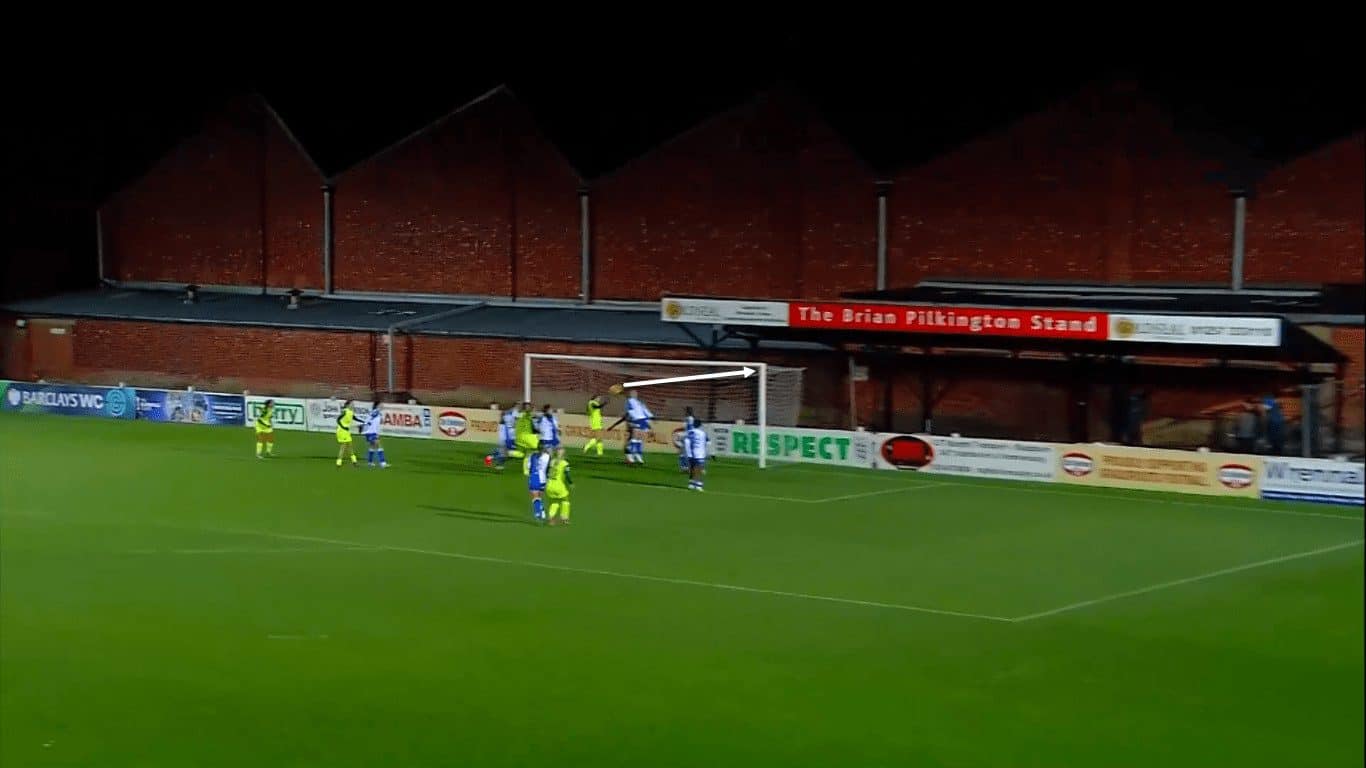
It is also certain that the team trains a lot on different types of corner-kick deliveries and on various plans to execute them to avoid falling into the trap of redundancy, which explains why Sunderland can still score from corner-kicks and free-kicks. Also, the team has some set-piece specialists who can score free-kicks directly, which can be considered a powerful attacking weapon, especially when open-play solutions are insufficient.
This Katie Kitching direct free-kick goal highlights Sunderland’s mastery of set-pieces and frequently exploiting this “tool” to their advantage this season.
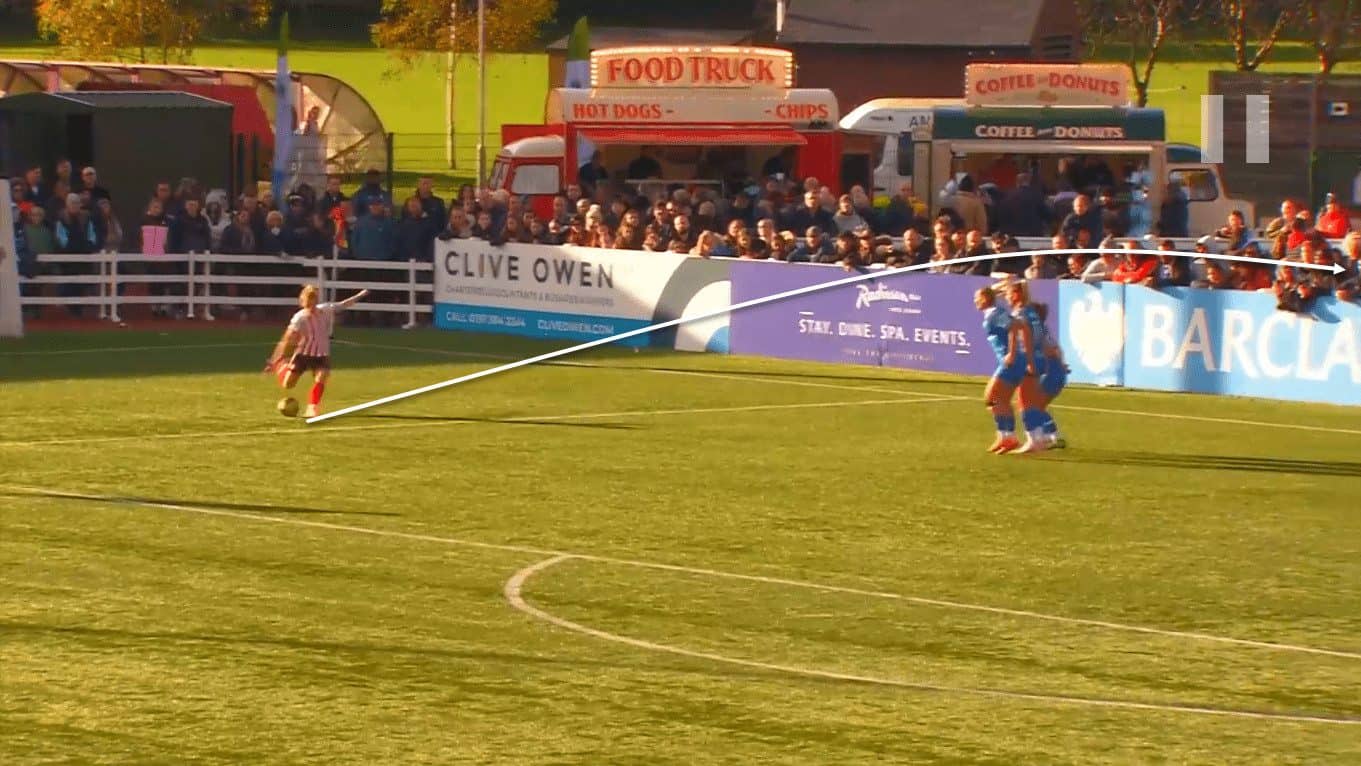
In addition to set-pieces, which are the team’s most potent attacking weapon, Sunderland rely on penetrations either on the wings or from the middle by some of their pacier players — mainly Libbi McInnes and Katie Kitching, who are also good dribblers.
With one-two passing combinations at times and solo penetrations at other times, Sunderland’s midfielders often create a lot of danger, given their excellent chemistry with the striker Elizabeta Ejupi.
This following goal action highlights Sunderland’s effective usage of one-two combinations in tight areas and with single touches every time but with a lot of movements without the ball, especially from Libbi McInnes, who led the action from midfield to the box before finishing it herself with an accurate shot. This tendency to opt for one-two combinations can always be useful in breaking defences, especially when the passing is accurate, and the movements are well-time like in this action.
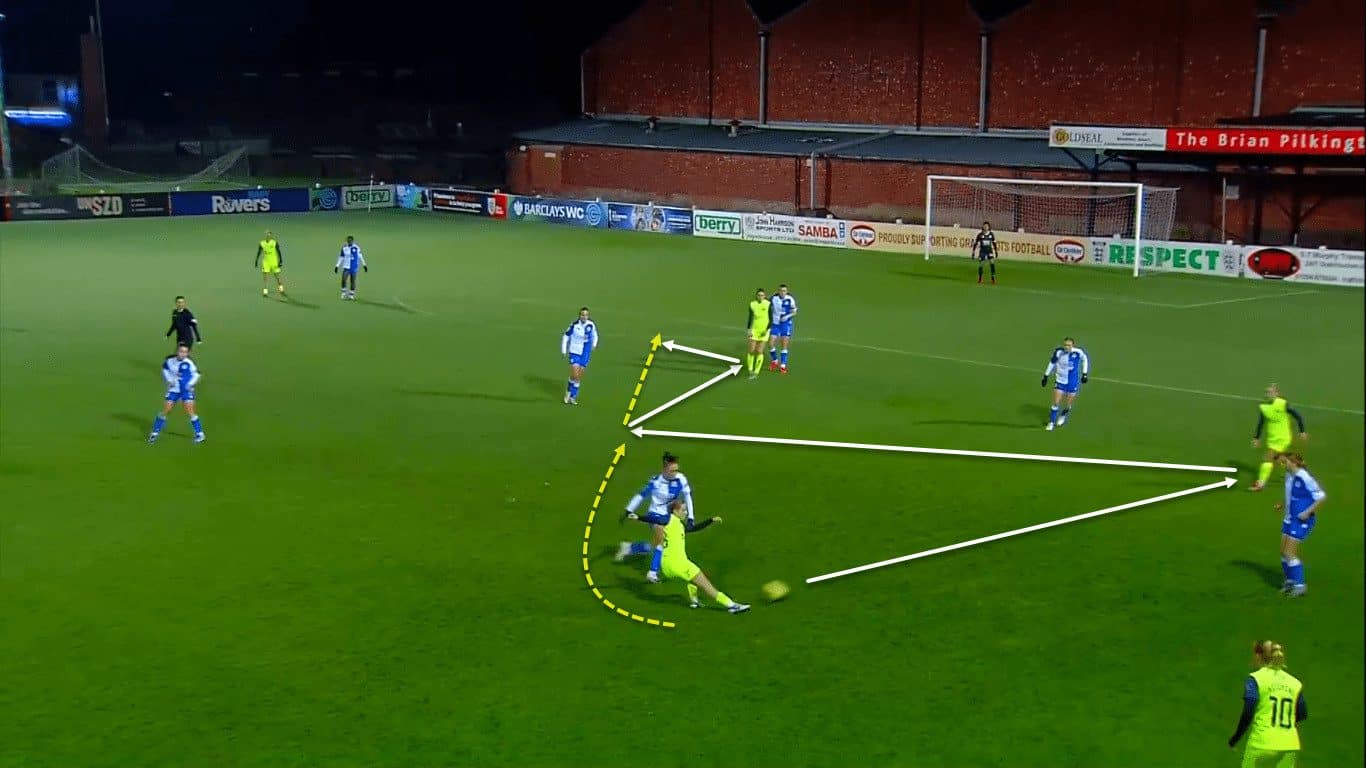
It is also true that Sunderland shoot 9.14 times per match with 44.2% average shots on target, but improvements are still needed, mainly regarding the exploitation of crosses and the rate of their usage. In other words, Sunderland have some powerful and talented attacking players who can exploit crosses in a very clinical way. However, the team scored very few goals from crosses, and the number of their crosses per game certainly needs to be increased in order to create more goalscoring situations for the players waiting inside the box.
Most of the time, when Sunderland opted for crosses, they were able to create a lot of danger since players like Elizabeta Ejupi and Mary Grace McAteer have the abilities needed to finish well in these situations and deal well with crosses. This example shows how Mary Grace McAteer converted this cross into a beautiful goal against one of the team’s direct opponents, Birmingham City, despite receiving the ball in a complicated situation while being tightly marked. Nevertheless, her movement without the ball and anticipation of her teammate’s cross were the keys to getting to the ball first and scoring a goal using her left foot to catch it before reaching the defender.
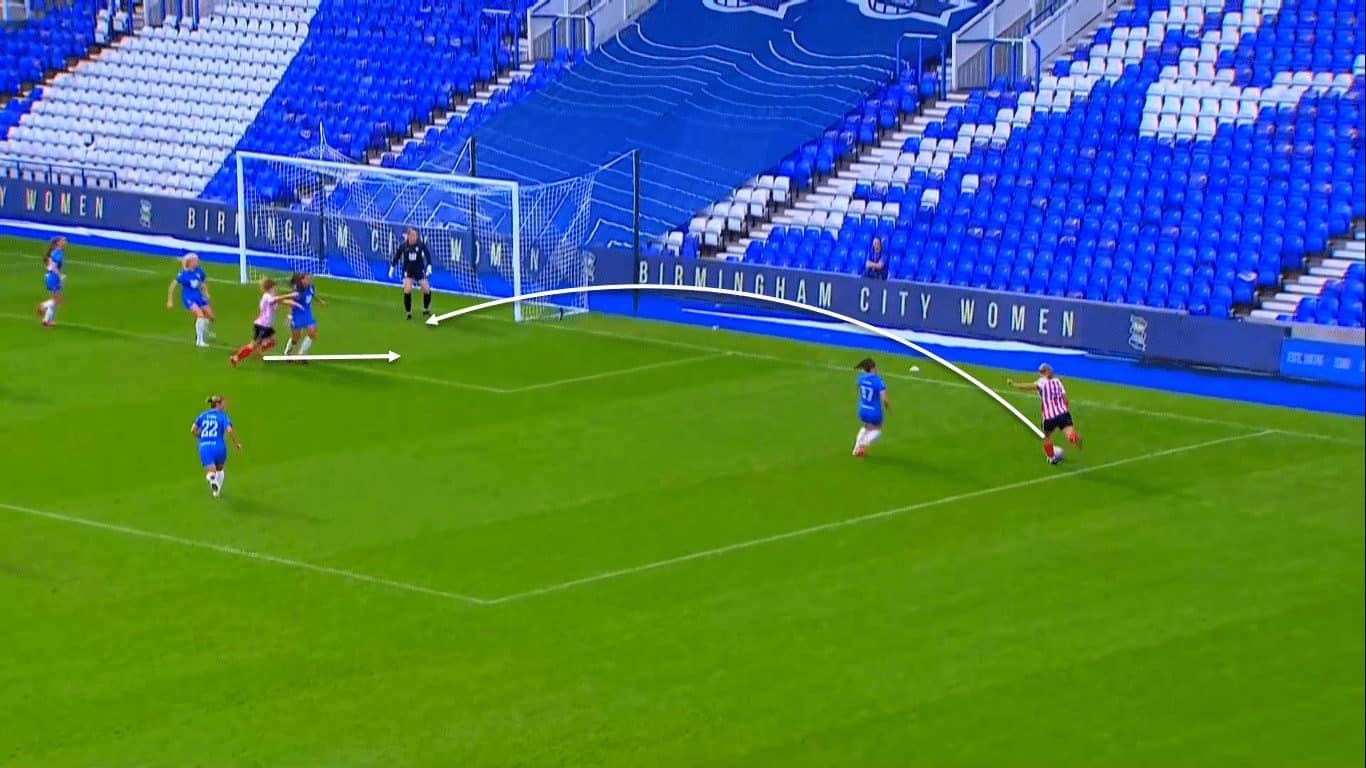
Transitions and playmaking
Regarding transitions, Reay often instructs attacking players to advance very quickly without the ball and midfielders to serve them as quickly as possible, whether with through passes or with long ones, depending on the situation. The striker often moves without the ball to provide a passing option, gets the ball and serves ones of the wingers coming from behind. This is Sunderland’s standard counterattacking plan. But, of course, plan changes often occur depending on the situation and the opponent.
This counterattacking example highlights Sunderland’s ability to reach the final third quickly and to provide excellent through passes to attacking players. Indeed, this action was not converted due to a defender’s clearance on the goal line; yet, this was an example of a perfectly executed counterattack from Sunderland.
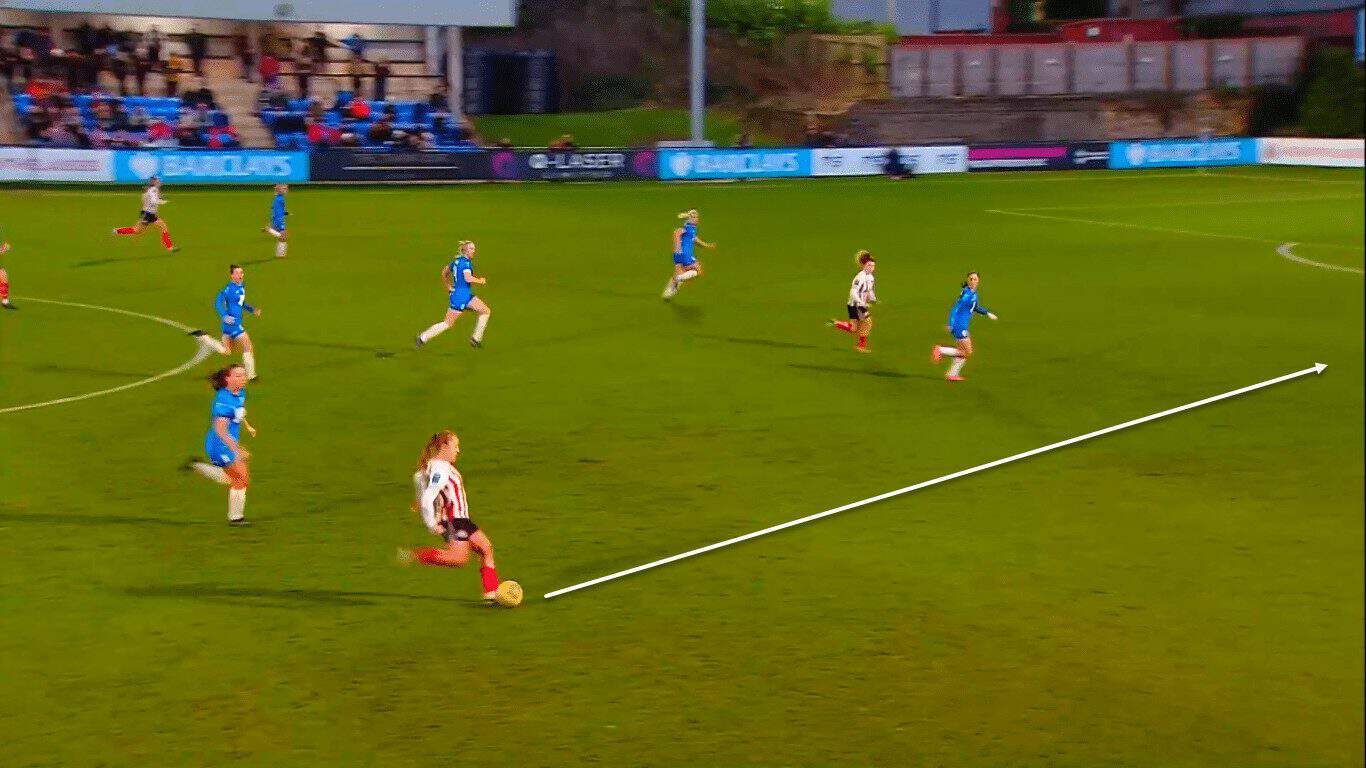
When it comes to defensive transitions, Sunderland usually leave two fixed players at the back, even when the team is attacking with numerous players. A player like Amy Goddard, with excellent defensive attributes and outstanding physical abilities, often succeeds in resolving counterattacking situations with the constant support of Brianna Westrup.
Things like the one shown below can get much riskier on some occasions. Reay should consider imposing the support of midfielders on similar counterattacking situations to avoid the one-on-one duels in defence, especially when facing teams with influential attacking players.
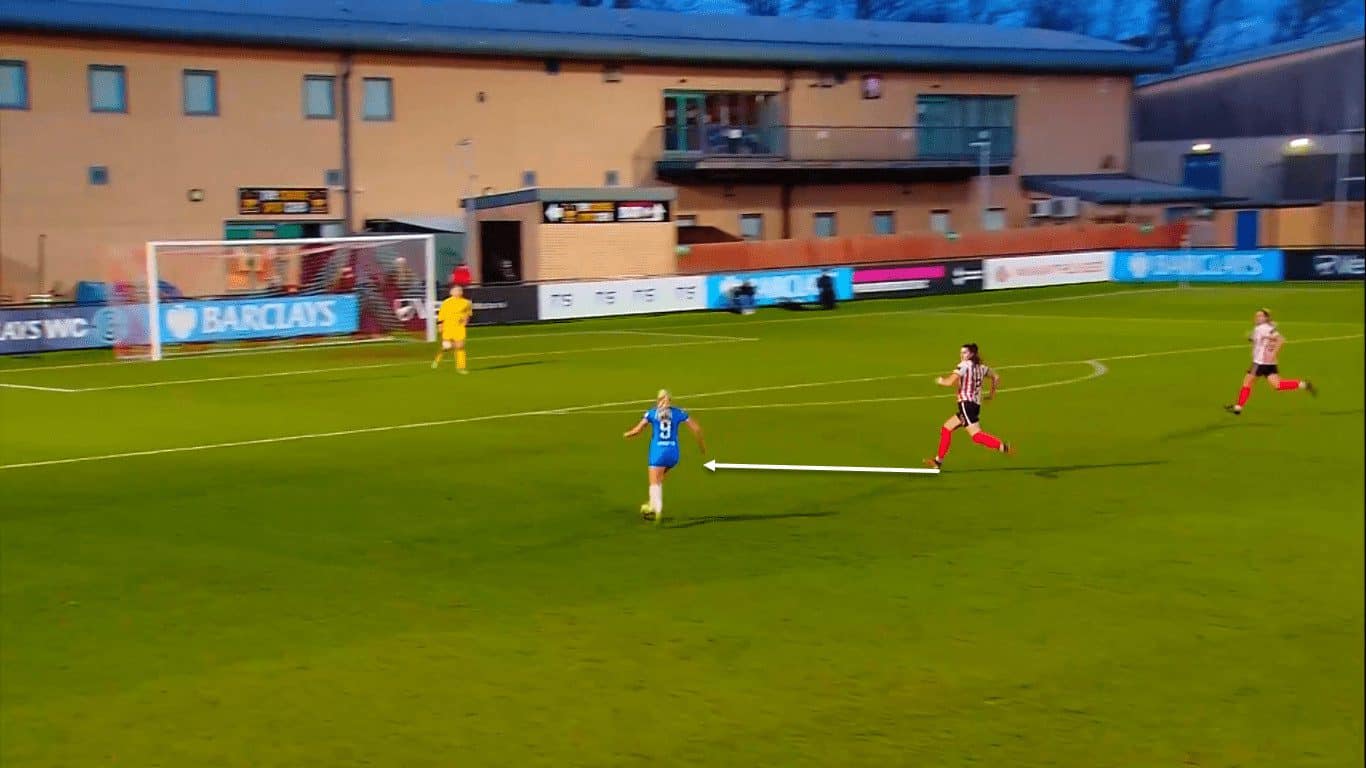
Sunderland’s possible defensive adjustments
From a defensive perspective, Sunderland can be proud of their performances so far. They have only lost two games while conceding nine goals overall in 12 played games, with an average of 0.93 conceded goals per game this season. With nine, Sunderland hold the record for the lowest number of conceded goals in the FA Championship this season. Still, there are a few adjustments and improvements that Reay can implement when working on the defensive aspect.
One of the reasons that led to conceding goals this season is own goals and deflections that confused the goalkeeper and eventually resulted in own goals. To avoid this, defenders will need to train extensively on clearances, when and where to clear the ball, and in which situations centre-backs should not touch the ball, as this can be crucial to saving some actions.
The following picture shows an own goal scored by Westrup due to her wrong clearance that went directly towards the net. At the same time, the goalkeeper could not save it since she did not expect Westrup’s clearance to be directed towards goal and did not have the necessary time to react quickly. Although Westrup’s intent and reflex deserve the credit, her execution of the clearance was, unfortunately, poor.
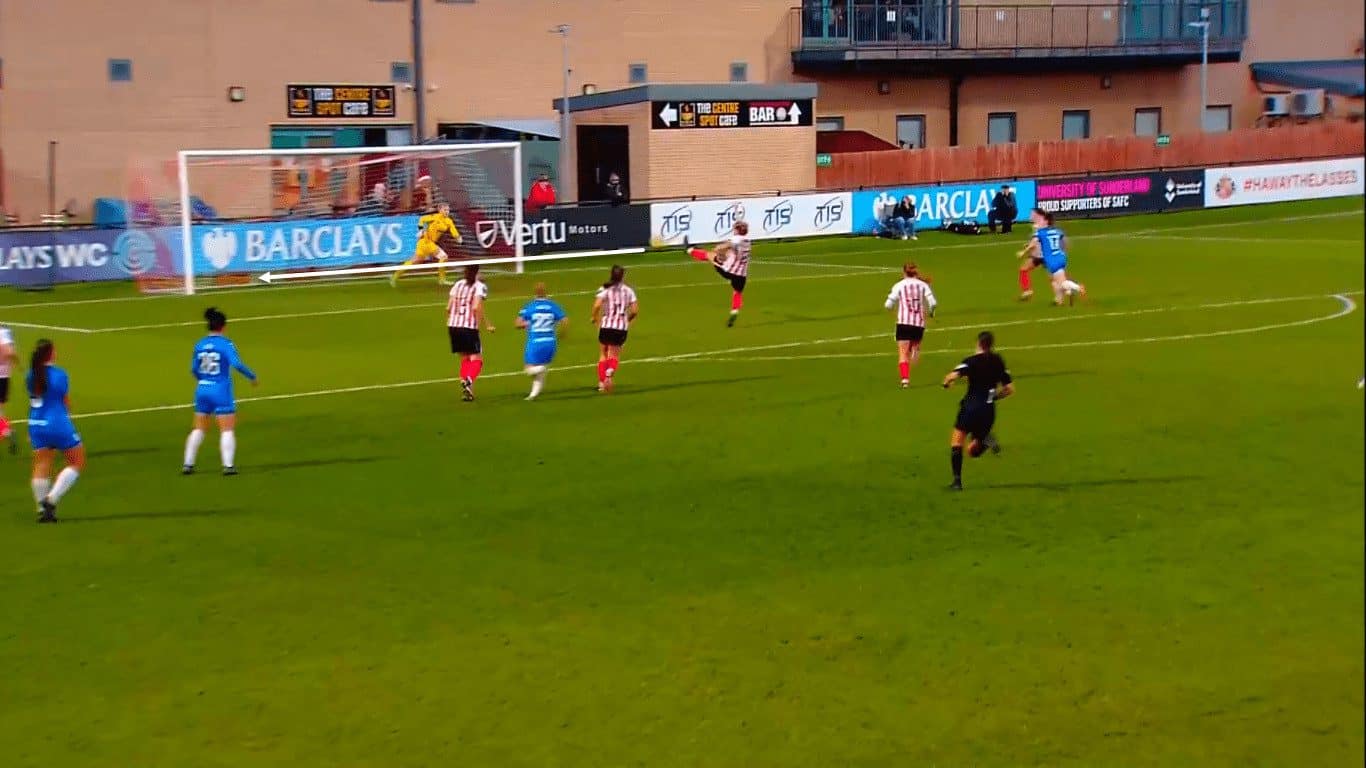
In addition, Reay should pay more attention to when she should opt for a high defensive bloc and when to avoid using it, as there are moments when the team should retreat not to allow the opponents to exploit the space behind the defence, especially when noticing that this opponent is trying to advance and exploit that space.
Sunderland conceded some goals due to this mistimed high defensive block usage and individual errors, allowing the opponent to intercept the ball and get the necessary space to finish the action successfully and without disturbance.
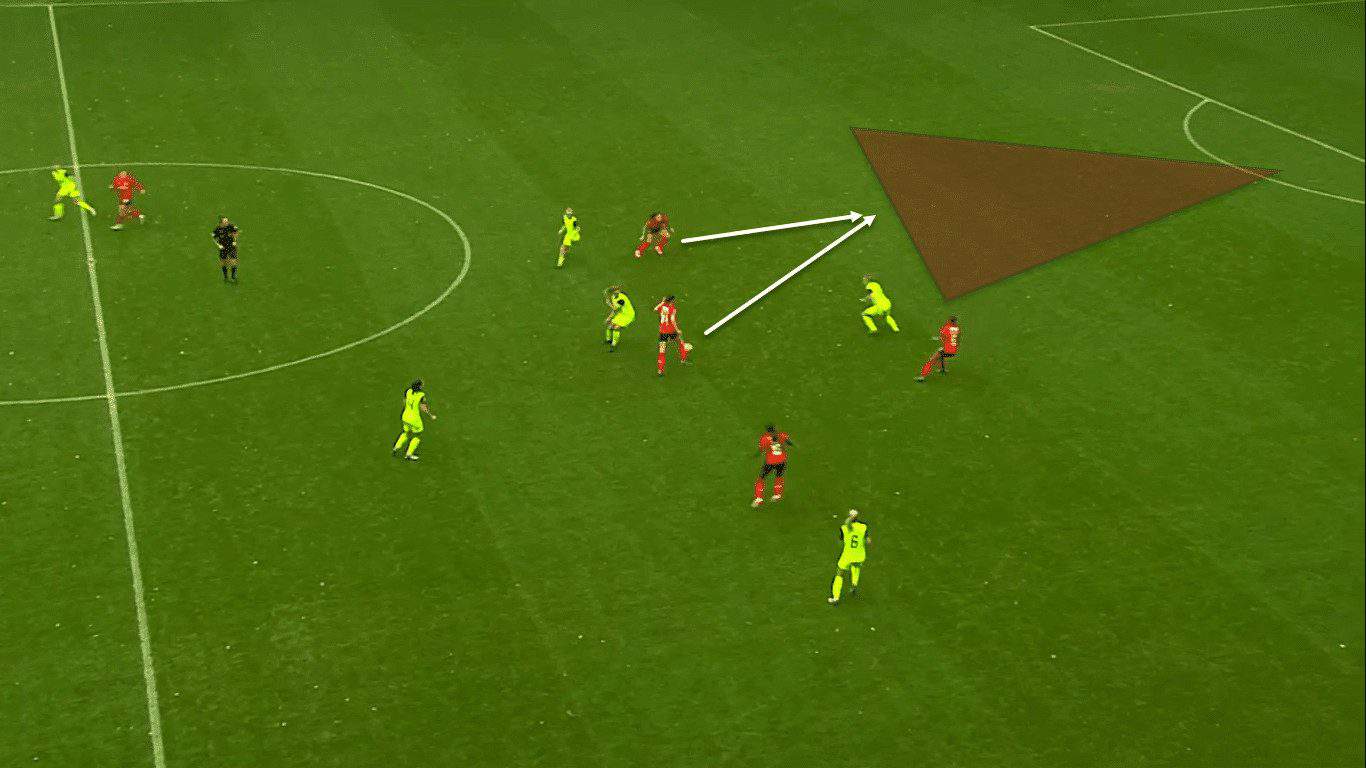
The rest of Sunderland’s conceded goals took place either due to the goalkeeper’s mistakes or errors in clearing attempts that led to second balls collected and exploited effectively by opponents.
Some other goals were scored following penetrations from both wings. Therefore, working with the full-backs and the wingers to be more solid in defensive duels and cover with more determination inside the team’s third would help reduce the possibility of conceding goals from both wings.
Conclusion
Melanie Reay has been doing an excellent job with Sunderland this season, especially from a defensive perspective, despite the few committed mistakes that can fixed with extra training and more strict defensive instructions. Overall, Sunderland can be considered a powerful team under Reay, and the attacking performances of the team showcase their head coach’s intelligence, especially when it comes to exploiting set pieces in a very clinical way.
Moreover, these attacking performances can become even more convincing by alternating the attacking plans and intensifying crosses to use the strikers’ excellent abilities in the air a bit further. Sunderland should believe in their ability to advance to the WSL, as they have all the necessary skills to achieve their aim.

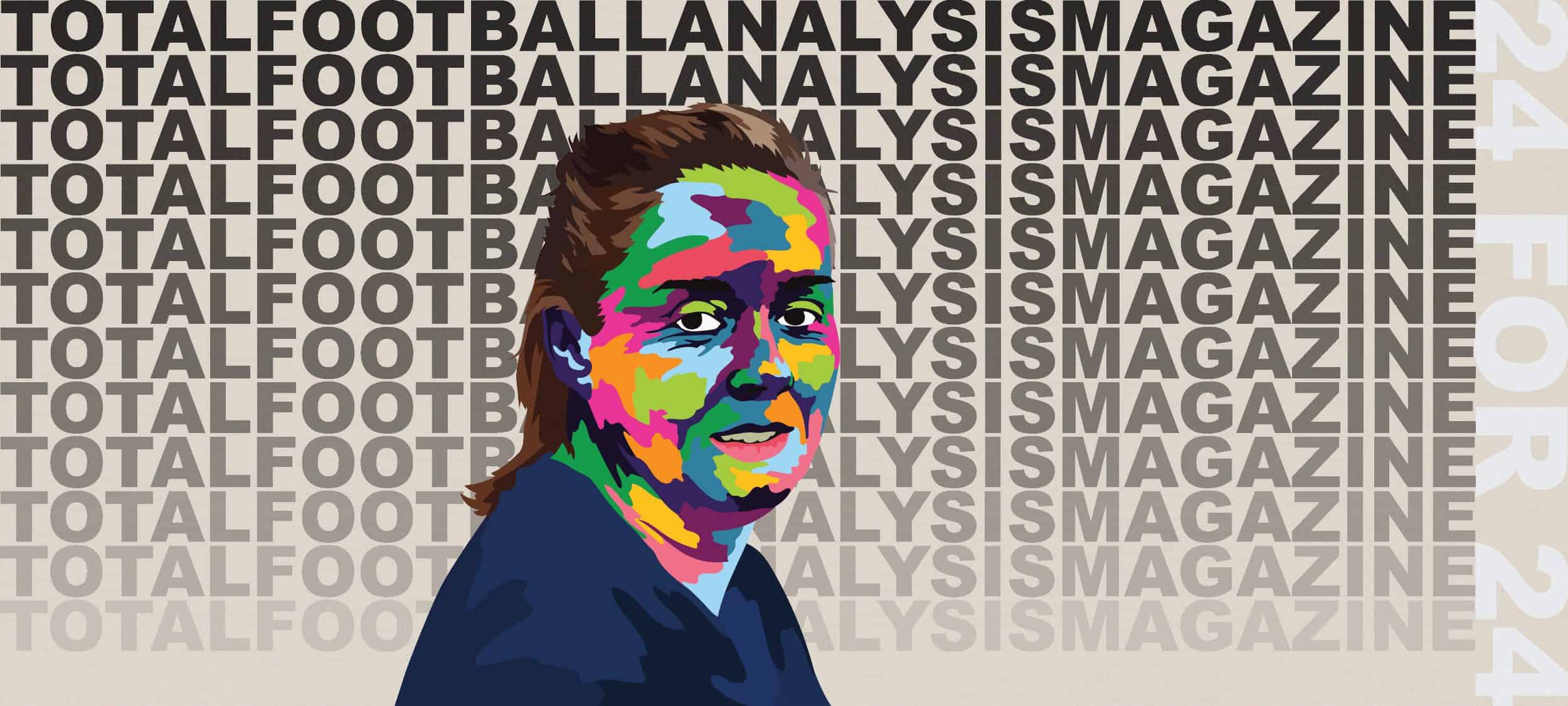


Comments